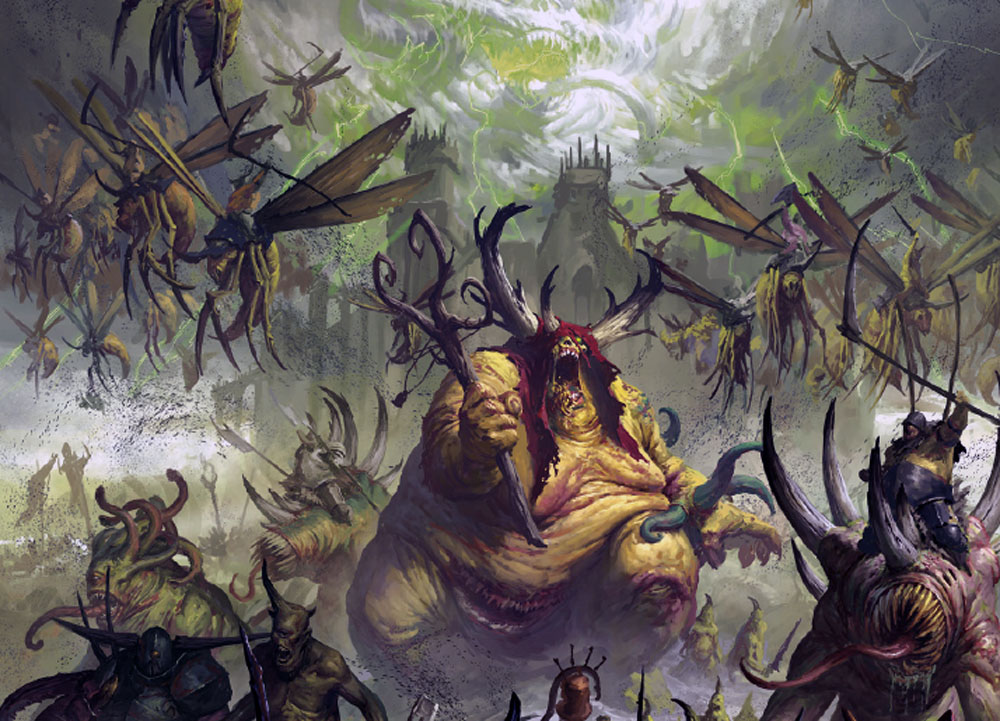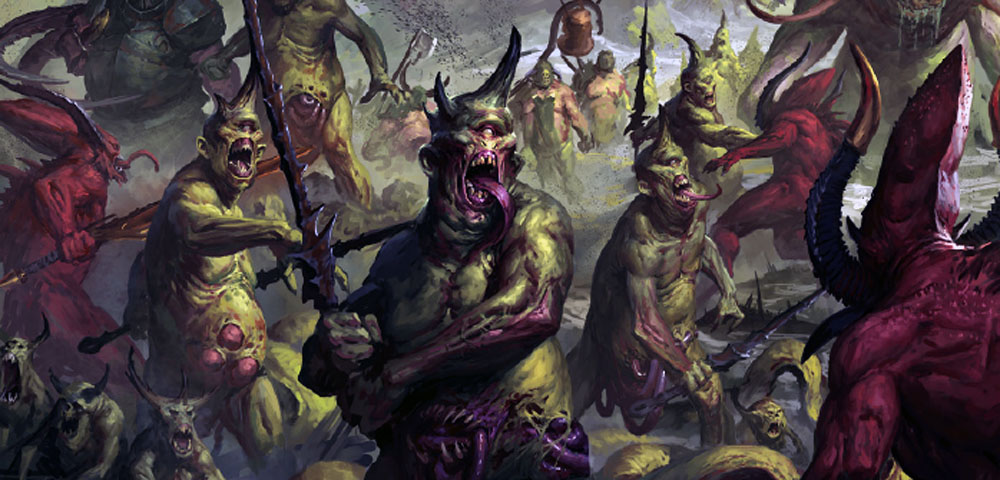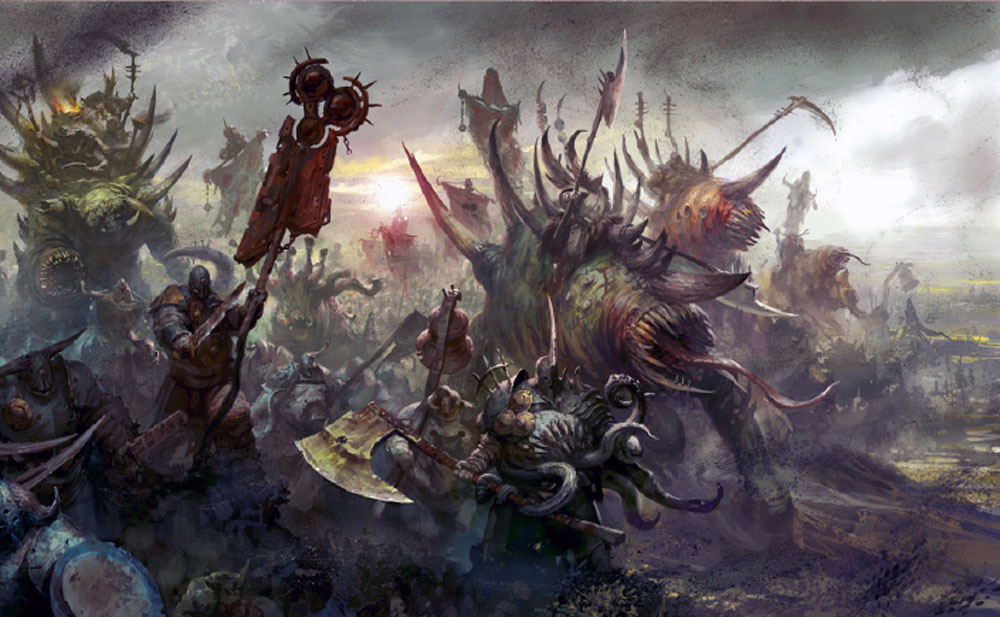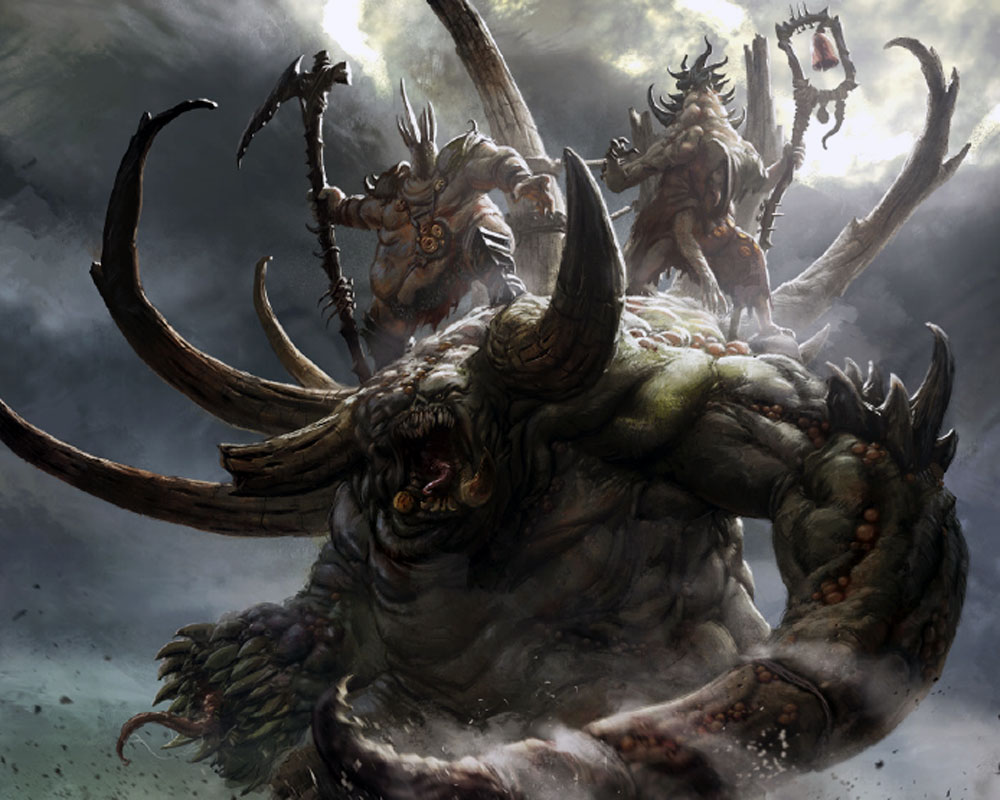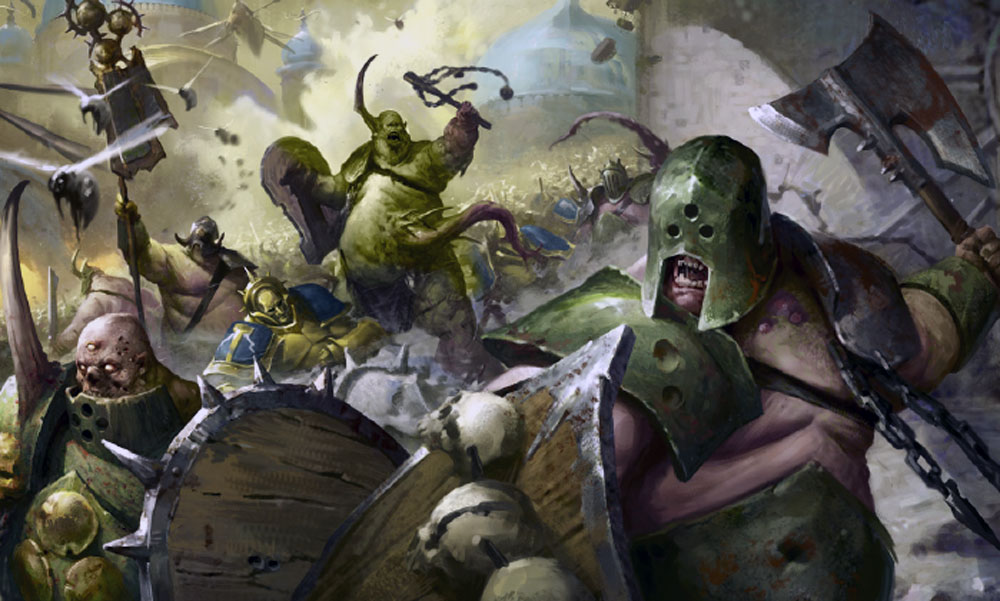At the same time with the Daemons codex, Nurgle’s battletome for Age of Sigmar is released. It is especially interesting, considering how boring and mediocre are new 40K daemons. Even though Nurgle is the best part of them. Let's compare.
In the beginning, we meet the main feature of the army - the cycle of corruption. You could already see it in the set of the recent Blight War campaign. Each turn the cycle shifts, giving you different bonuses. Interestingly, the beginning of the cycle is determined randomly before the game starts. However, you can influence it with the help of magic and abilities of the characters. This is not only interesting, but also useful - the effects include rerolls, bonuses to rolls, movement, and even infestation of the terrain. A really interesting solution that adds variety to the game. What a pity that in 40K they did not come up with something like that.
In addition, this book brings diversity into the summoning mechanics. To summon the Nurgle daemon, you need to earn special contagion points. They are earned by the control of territories (and some abilities), which very well reflects the background of Nurgle's army. Moreover, units can be summoned traditionally, next to the characters, and near Nurgle trees, which are free here, and can be placed anywhere on the battlefield before the game starts. By the way, it is unclear whether it is necessary to include the point cost of these units in the roster, as with the usual summoning. If not - then this feature generally becomes an excellent alternative. Earning contagion points is not so simple, and therefore, you won’t be able to spam the enemy with summoned daemons. But a nice bonus in the for of an unexpected squad in the behind enemy lines by the end of the game can be very useful.
As in the two previous books of the gods, warlord traits, magic and artifacts are divided into three sets - for daemons, mortals, and Rotbfingers. In total, you can choose from 18 traits and artifacts, and 9 (+1 total) spells. A solid choice that will make you think several times before choosing a commander. And here again, everything is much more interesting than in the current 40K. In addition to the classic mortal wounds, regeneration, and weakening of the enemy, which you expect from the army of Nurgle, you have the opportunity to turn opponents into beasts of Nurgle, a flask that regenerates all wounds at 2+, but 1 turns you into a beast yourself, a spell greatly weakening the enemy but making the wizard to stand still, and a lot of other interesting things. The ratio of banal spells with unusual ones is about 3 to 2, and this is still much better than in the Daemons codex.
The rules for new models leave no doubt for which system they were originally made. It seems that everything is the same as in 40K, but within the framework of AoS mechanics, these abilities look more organic and useful. Not to mention the greater variety of weapons, while in 40K one could observe a frank copy-paste when different artifacts from different characters had absolutely the same profile. Here you will find interesting rules for all old and new models, as well as formations (more precisely, battalion warscrolls) for them.
In the end, this army definitely has its face - the hordes of Nurgle, infecting everything around, and getting stronger from this, are really reflected in the gameplay. You have a lot of interesting combinations of abilities that can radically change your game. If we talk about the strength of the army, it's hard to say unambiguously without playtests. At this moment this all looks, at least, competitive. Given the situation with the balance in AoS, we are unlikely to see completely useless units. In general, the book is a success with no doubt. So, after this comparison what is happening in 40K looks even more depressive...
